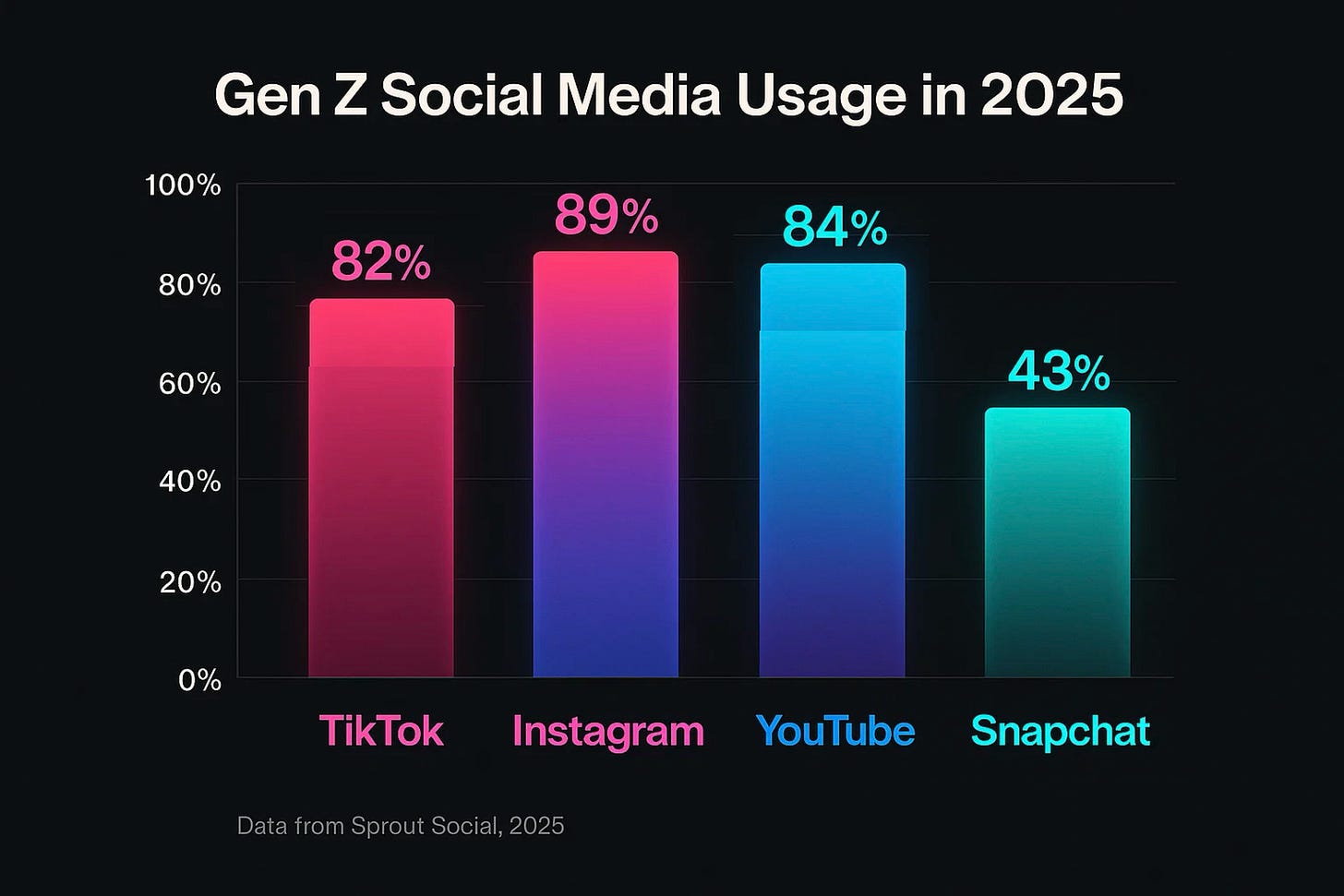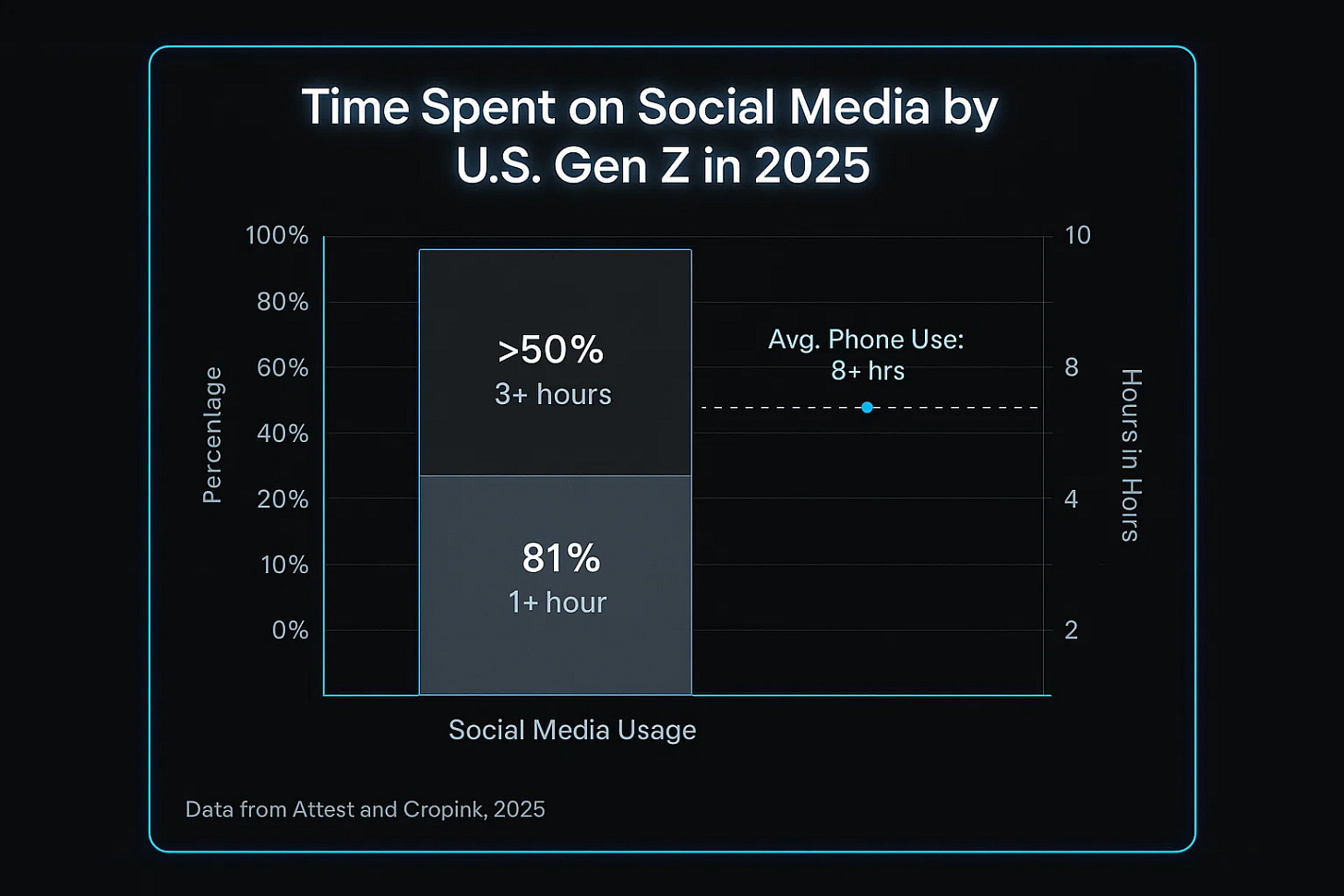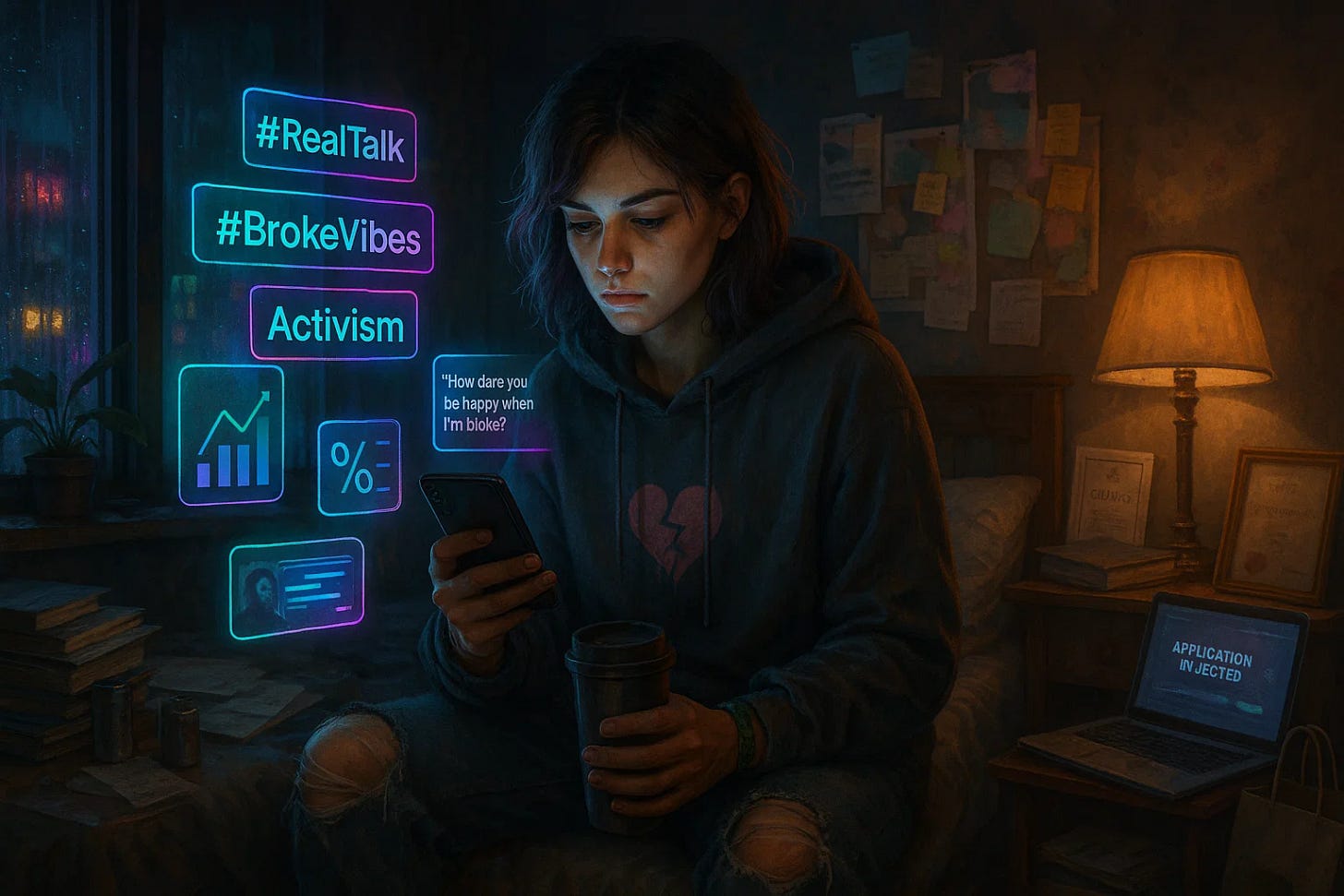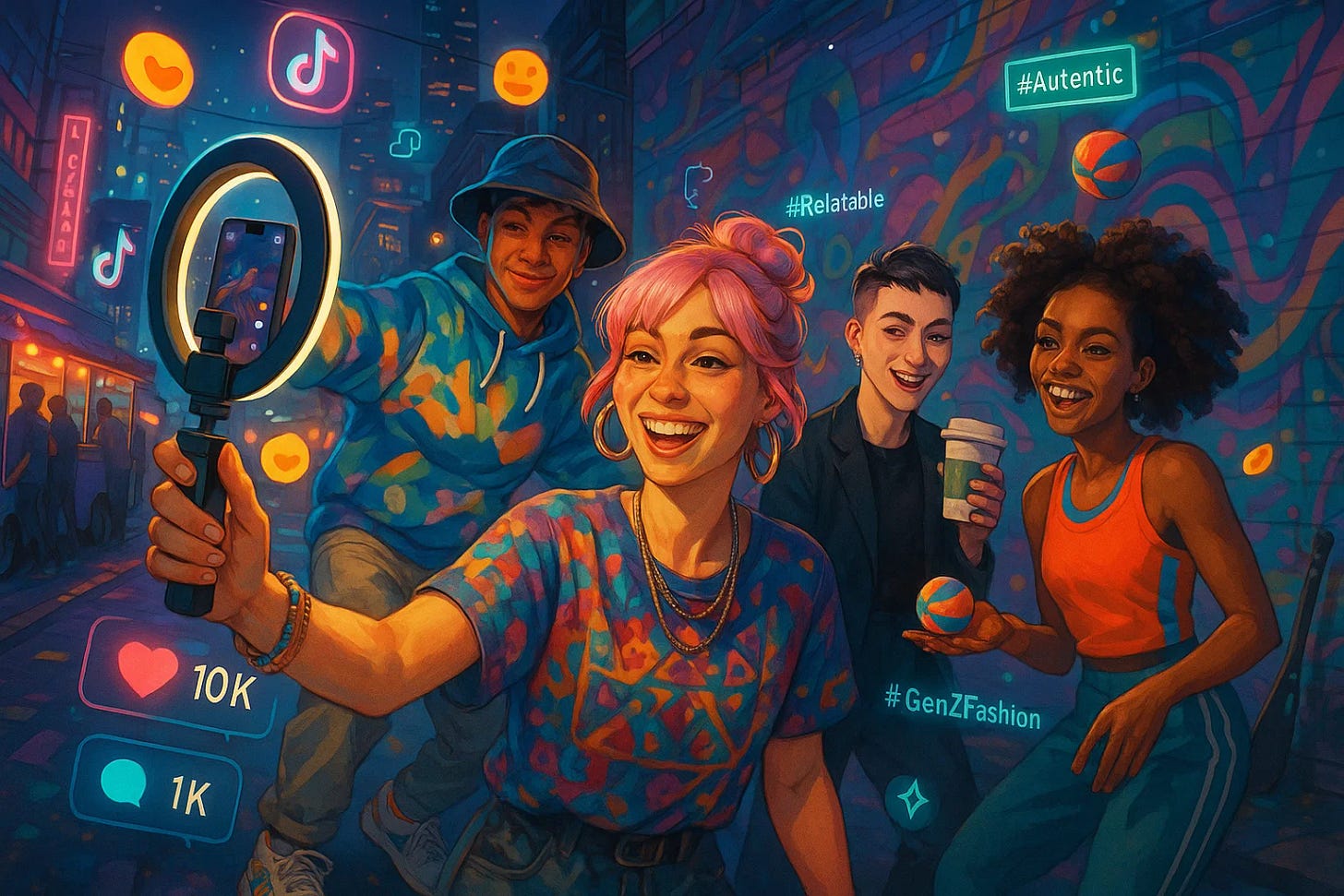Hey everyone, Ken Rutkowski is here, diving into the digital deep end with my daughter, Gia Rutkowski, a Chicago-based thought leader who’s cracking the code in Gen Z’s online behavior. As someone who’s watched Gia grow up navigating the wild world of social media, I’m thrilled to share her insights. Gia’s built a massive following on TikTok (@attemptedsoc) by dissecting digital trends and explaining what they mean for youth culture. Today, we’re unpacking the latest stats on Gen Z’s digital habits, their love affair with TikTok, and how platforms like Instagram and YouTube are shaping their world. Buckle up—this is a data-driven ride through the minds of the most connected generation yet.
The TikTok Takeover: Gen Z’s Digital Home
Let’s start with the numbers. In 2025, TikTok is the undisputed king of Gen Z’s digital universe. With 1.58 billion monthly active users globally, it’s the fifth most popular social media platform, trailing only Facebook, YouTube, WhatsApp, and Instagram. But for Gen Z? It’s number one. A whopping 82% of Gen Z in the U.S. are on TikTok, compared to 89% on Instagram and 84% on YouTube. What’s wild is the time they spend: U.S. TikTok users average 24 hours a month on the app, outpacing Instagram’s 4.127 billion daily minutes. That’s over a full day each month scrolling through dance challenges, GRWMs (Get Ready With Mes), and viral memes.
Gia’s tapped into this goldmine, building a following that’s 70% female, aged 16–25, mostly in major U.S. cities like Chicago, New York, and Los Angeles. Why TikTok? “It’s the algorithm,” Gia says. “It’s scarily good at finding my audience—young women who vibe with my takes on cultural moments.” TikTok’s algorithm pushes content to users based on engagement, with views, likes, and favorites acting like digital currency. A single view might be worth a point, but a favorite? That’s gold. Gia’s videos, often long-form and educational, hit a favorite ratio of 1 in 5 viewers, way above the average of 1 in 20. This keeps her content soaring on the For You Page (FYP).
The chart above shows just how dominant TikTok, Instagram, and YouTube are for Gen Z. But it’s not just about scrolling—they’re creating, too. 83% of Gen Z TikTok users have posted their own videos, from lip-syncs to deep dives on mental health. Gia’s secret sauce? She pairs visuals (think popping open a lip gloss) with big cultural hooks. “You have to earn the lecture,” she says. “Start with something relatable—like a viral trend or a feeling like aimlessness—then hit them with insight.”
YouTube and Instagram: The Supporting Cast
While TikTok’s the star, YouTube and Instagram are no slouches. YouTube is Gen Z’s go-to for long-form content, with 93% of U.S. teens having used it and 71% visiting daily. It’s where they binge MrBeast’s $1M giveaways or tutorials from creators like MKBHD. Instagram, meanwhile, is the hub for curated aesthetics—think Kylie Jenner’s flawless Reels or Nike’s sleek product drops. 91% of Gen Z are on Instagram, and 47% check it daily.
What’s driving this? Short-form video. TikTok pioneered it, but Instagram Reels and YouTube Shorts are catching up. 67% of Gen Z prefer comedy and memes in bite-sized clips, while 44% watch “how-to” content. Gia’s noticed this shift: “People are cognitively fried. You need captions, visuals, and new info all at once to keep them hooked.” Brands like Adidas and Glossier are nailing this, blending entertainment with subtle product placement in Reels and Shorts.
This pie chart breaks down what Gen Z craves on platforms like TikTok, Instagram, and YouTube. Notice the overlap—interactive content like polls and Q&As (43%) is huge, reflecting Gen Z’s need for real-time connection. Brands like Spotify are leaning into this, hosting live Q&As with artists like Billie Eilish to keep fans engaged.
The Hyper-Individualist Epidemic
Now, let’s get real about behavior. Gen Z in the U.S. is grappling with what Gia calls the “hyper-individualist epidemic.” Shaped by a capitalist mindset and 8+ hours daily on their phones, they’re fed a diet of “hustle culture” content. Think Gary Vaynerchuk’s motivational rants or crypto influencers promising quick riches. This breeds a mentality where time is money, and relationships take a backseat. “Why talk to the cashier when I can DoorDash?” Gia asks. “It’s like scrolling is the default addiction.”
The stats back this up: 81% of Gen Z spend 1+ hour daily on social media, with over half clocking 3+ hours. This constant digital drip erodes real-world connection. 46% of Gen Z use social media over search engines like Google for info, turning TikTok into a de facto search engine for everything from restaurant recs to life advice.
Compare this to global Gen Z. In collectivist cultures like Japan or Greece, community is baked into daily life. Family dinners, local festivals, and regional traditions ground young people. Gia, with her Greek heritage, sees this firsthand: “In Greece, you’re not told to separate yourself. You’ve got a built-in sense of belonging.” In the U.S., though? It’s every influencer for themselves.
This chart paints a stark picture: Gen Z’s glued to their screens, with social media eating up hours that might’ve gone to IRL connection. It’s no wonder they lean into individualism—digital life rewards it.
Pessimism vs. Opportunity
Gia’s blunt about Gen Z’s outlook: “We’re pessimists who call ourselves realists.” Fed a steady stream of negative media—think doomscrolling on X or viral TikToks about economic woes—they struggle to find optimism. 42.9% of Gen Z rely on social media for daily news, with TikTok leading for 21%. But the news they get? Often bleak. A viral tweet about enjoying breakfast on a porch sparked backlash: “How dare you be happy when I’m broke?” Gia sighs, “It’s morbid, but self-pity feels safe.”
Economic pressures don’t help. U.S. Gen Z faces mounting student debt and a job market where degrees don’t guarantee jobs. 48% plan to buy more through social media in 2025, chasing instant gratification via TikTok Shop or Instagram Shops. Yet, despite their vocal “ethical buying” rhetoric, only 1% actually prioritize sustainability or morality when shopping. It’s performative activism—reposting a cause feels good, but wallets tell a different story.
Globally, it’s a mixed bag. In Europe, Gen Z embraces a “chronically unemployed” mindset, finding purpose in family or leisure over hustle. In war-torn regions, activism is less performative—survival trumps posting. Gia admits, “I can’t generalize the globe, but U.S. Gen Z’s obsession with money sets us apart.”
The Brand Playbook: Authenticity or Bust
For brands like Nike, Apple, or Starbucks, cracking Gen Z is a puzzle. They’re cynical, quick to spot inauthenticity, and demand content that’s funny, relatable, and real. Gia’s advice? “Don’t sell—entertain.” Nano-influencers (under 10,000 followers) see 10% engagement rates on TikTok, dwarfing macro-influencers like Charli D’Amelio. Why? They feel like friends, not ads. 61% of marketers use TikTok for influencer collabs, with brands like Fenty Beauty nailing it by showcasing diverse models in raw, unfiltered Reels.
Gia’s own content—think dissecting a viral TikTok while applying mascara—shows how it’s done. “You need a hook in the first second,” she says. “A sound, a trend, a feeling.” Her Substack (Gia Substack) and upcoming YouTube shift will lean into this, offering deeper dives for her 13–30 audience.
The Future: Connection Over Capitalism?
As Gen Z reshapes digital culture, the question is: can they break free from hyper-individualism? Gia’s hopeful but realistic. “We’re taught to be victims, to let institutions fix our problems. But that’s not working.” She points to creators like Khaby Lame, whose 162.4M TikTok followers love his silent, universal humor—no preaching, just connection. Maybe that’s the key: less noise, more humanity.
For now, Gen Z’s digital trends—TikTok’s dominance, short-form video, and social commerce—are rewriting the rules. Brands, marketers, and parents (hi, me!) need to listen. Follow Gia on TikTok (@attemptedsoc), LinkedIn, or Substack for more. She’s not just my daughter—she’s your guide to the future.


















